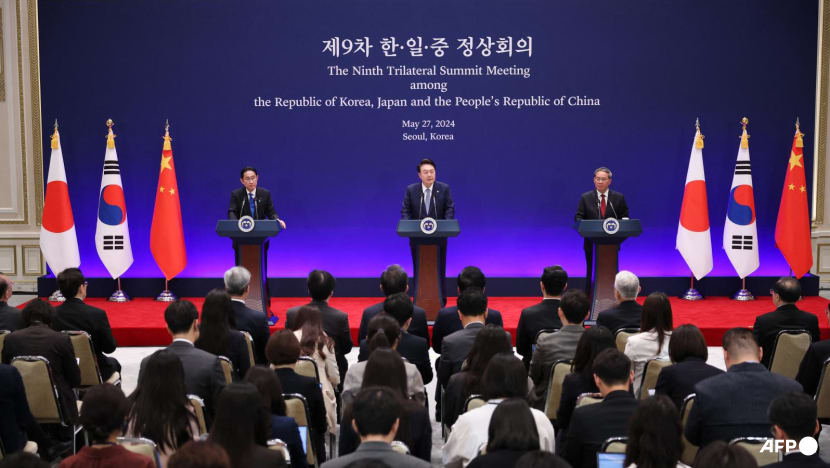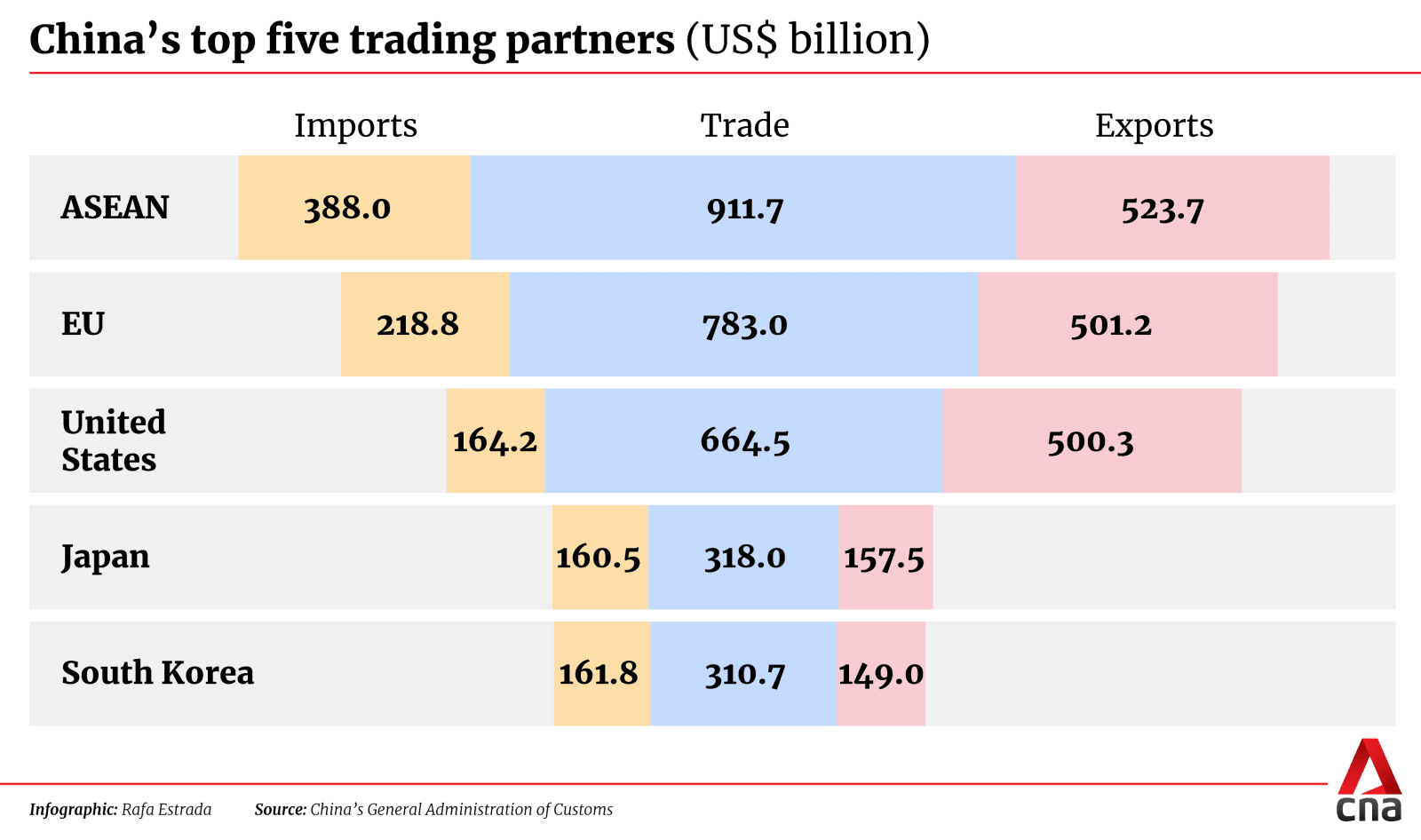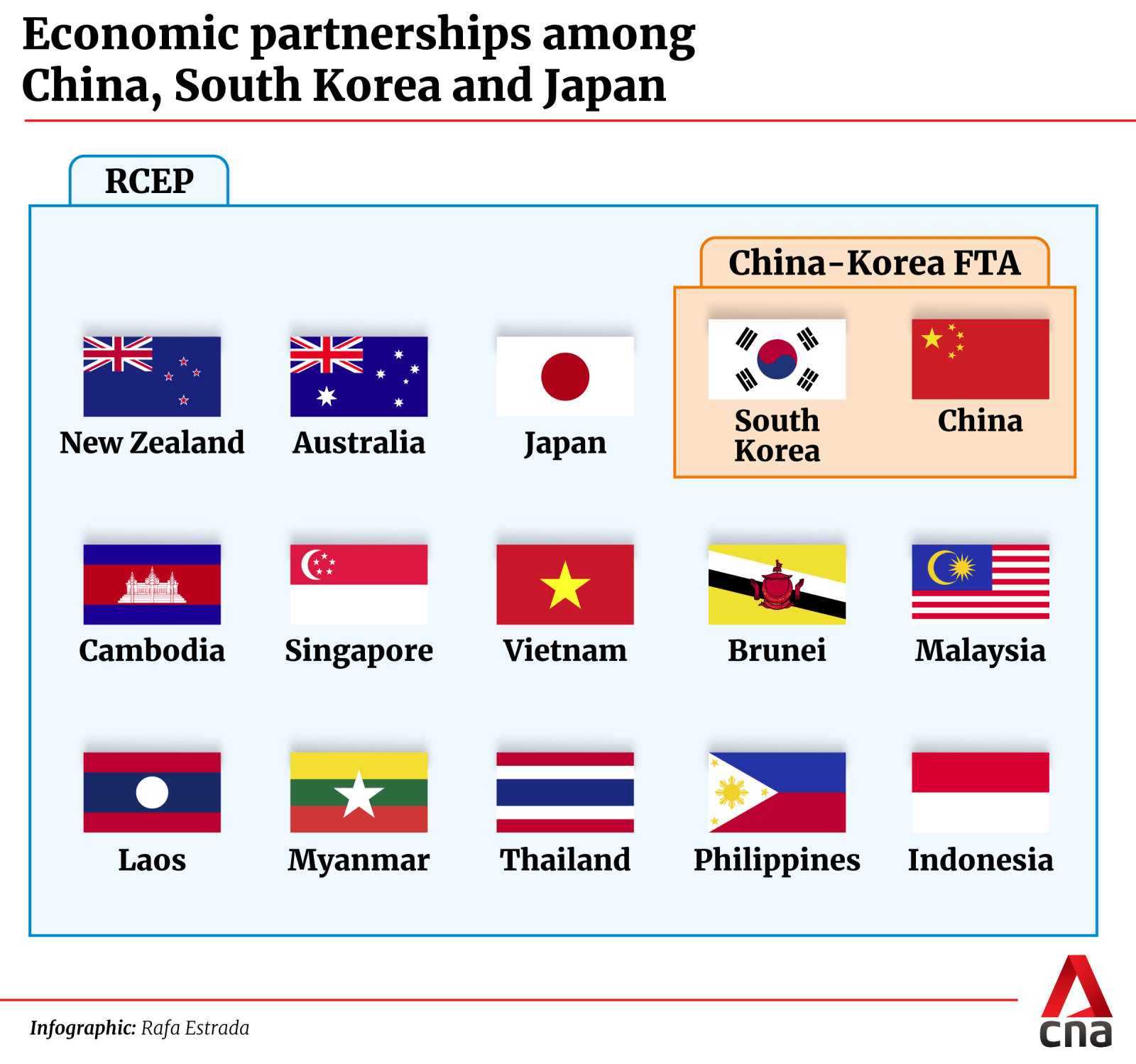
Talk of a free trade pact among Japan, South Korea and China resurfaced at their recent summit. Analysts say pragmatism must prevail over ideology to close the deal.

This audio is generated by an AI tool.
SINGAPORE: China, Japan and South Korea will all benefit if they can get a three-way free trade agreement (FTA) across the line, but they will have to overcome serious challenges stemming from geopolitical tensions and other issues, experts say.
Talks for their FTA have stalled since 2019, but the elusive trade deal was cast into the spotlight again last Monday at a trilateral summit attended by Chinese Premier Li Qiang, Japanese Prime Minister Fumio Kishida and South Korean President Yoon Suk Yeol.
At the summit – the first in four years – the three leaders vowed to restart talks on the FTA.
China’s Mr Li called for South Korea and Japan "to deepen economic and trade connectivity, maintain the stability and smoothness of the industrial chain and supply chain, and resume and complete the negotiations of the China-Japan-South Korea FTA as soon as possible".
Three days later on May 30, China’s Ministry of Commerce said it stood ready to speed up negotiations.
The Chinese side attaches great significance to talks on the FTA, which is expected to drive the steady recovery of the regional and even global economy, ministry spokesperson He Yadong said, as reported by state news agency Xinhua.
Korean President Yoon, meanwhile, said the three countries had “decided to create a transparent and predictable environment for trade and investment, and to establish a safe supply chain”.
At a trilateral business meeting held after the summit, business leaders agreed to establish a working group to conduct joint research on economic cooperation in the private sector.
The three countries have economic heft. They make up about 25 per cent of global gross domestic product (GDP) and have a combined yearly trading volume of over US$800 billion.
China is the largest trading partner of Japan and South Korea, while Japan and Korea are China’s fourth and fifth largest trading partners, respectively.

In restarting FTA talks, the East Asian neighbours will be building on existing trade pacts to try to deliver one that signals their strongest economic bonds yet, experts note.
China and South Korea have an FTA signed in 2015.
All three countries are members of the Regional Comprehensive Economic Partnership, which took effect in 2022. The RCEP is an FTA among the 10 member states of the Association of Southeast Asian Nations (ASEAN), Australia, China, Japan, South Korea and New Zealand.
A China-Japan-South Korea FTA will be recognised as “RCEP Plus”, going beyond the RCEP’s level of liberalisation.
For instance, the three countries will aim to fully abolish tariffs on automobiles and auto components, which the RCEP did not, reported news agency Nikkei Asia.
Japan will also seek reductions in industrial subsidies and less preferential treatment for state-owned enterprises, which were left out of the RCEP, Nikkei Asia reported.
Commitments by the three countries to each other under RCEP are “relatively thin”, noted Dr Deborah Elms, head of trade policy at the Hinrich Foundation in Singapore. The foundation works to advance sustainable global trade through research and education.
A three-way FTA will allow them to be more focused, she said. “If there're only three of you in the partnership, you can tailor an agreement often in ways that are more ambitious in some areas, than if you're trying to do it with (15 parties).”

Although China’s commerce ministry spokesperson He said the three countries’ economies are highly complementary and their industrial chains highly interconnected, Dr Elms said they are also competitors in many fields including agriculture, electronics and chemicals.
Finding products for which to remove tariffs will be “a challenge”, she said, citing furniture, raw materials and services as potential areas to be opened up.

While some experts say China is keenest to advance FTA talks due to its economic challenges, others believe an agreement will also serve South Korea and Japan.
China’s eagerness to push for the FTA is not surprising, said Professor Syaru Shirley Lin, chair of the Center for Asia-Pacific Resilience and Innovation and research professor at the University of Virginia in the United States.
“Closer market integration among these countries makes economic sense. Given China's economic challenges, reflected in the real estate slump, weak consumption and private-sector investment, and the pressure of deflation and growing debt, Beijing needs serious measures to boost its growth,” she said.